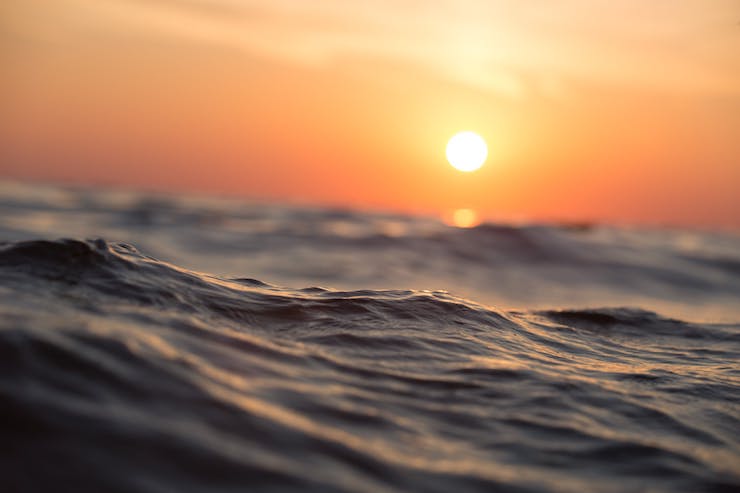Using Underwater Drones to Find Missing World War 2 Submarines

Armed with a passion for adventure and history, underwater explorers Tim Taylor and Christine Dennison have set out to solve the mysteries of lost US submarines. Tim, the CEO and founder of Tiburon Subsea, has over 30 years of experience leading underwater expeditions. Christine is the founder of Mad Dog Expeditions and is known world wide for her technical diving skills. Together the husband and wife duo have decided to search for submarines that have been lost to the depth of the oceans. They began this journey back in 2010 with the quest to find the USS R-12 that had sunk somewhere near the Florida Keys in 1943.
Using a remote controlled submarine with a camera on it, Tim and his team began the search for the R-12. On October 10, 2010 they found her submerged under 600ft of water 11 miles off the coast of Key West. The team returned to the site in 2012 and again in 2014 to further photograph and map the area with underwater drones. The R-12, with it’s 42 lost crewmen, was only one the few submarines that were lost during World War II to have been located. With the hopes of making sure that the crew onboard the R-12 and the other missing WWII submarines are never forgotten Tim created the Lost 52 Project. As Tim said, “Our mission objective is to provide the fullest possible documentation and accounting of these locations for our missing WWII Navy Sailors, their families, and the nation…A total of 52 U.S. Submarines were lost in WWII with 374 officers and 3131 men of the Submarine Force who gave their lives.”
Between 2010 and 2018 the Lost 52 Project had located 5 U.S. Navy Submarines using underwater drones. These vessels are the USS R-12 in Key West, USS S-26 in Pacific Panama, USS S-28 in Honolulu, HI, and the USS Grunion (SS-216) in Kiska, AK. This past June Lost 52 discovered yet another missing ship, one that had remained an enigma to those searching for it, the USS Grayback (SS-208). The problem with finding this submarine was that the records collected by the Japanese as to it’s final resting place were inaccurate. Japanese Navy expert and one of the team’s leading researchers, Yutaka Iwasaki, was pouring over documents from the Japanese regarding the Grayback. He found that there was a report of a Japanese aircraft having dropped a 500lb bomb on the submarine, but there seemed to be an error in the report’s coordinates. Tim said of the reported coordinates, “It was off by one digit. That changed the location by more than 100 miles.”
It was a good thing Mr. Iwasaki found that discrepancy because the team was on the verge of giving up. After endlessly searching the ocean floor Tim’s ship was in need of servicing and the $7 million drone they use for their missions was reporting an error. The team called back the autonomous drone, the behemoth Hugin by Kongsberg, to download the data it had collected before returning to shore. According to Kongsberg, “Our HUGIN Autonomous Underwater Vehicles – AUV / marine robot offer the ultimate in autonomous remote subsea survey capability. These free-swimming autonomous underwater vehicles are characterized by great maneuverability and high accuracy of stabilization. Hydrodynamic shape, accurate instruments and excellent battery capacity makes these AUV’s ideal choices.” So as the team waited to see what the Hugin found they hemmed and hawed over their next step. Soon they had their answer as they found an unusual reading from the data collected more than 1,400ft below the surface.
The following day Tim sent in a second drone with a real time HD camera to observe the area. As the drone descended to the ocean floor the torpedo like shape of a submarine came into view. The drone glided to the bow of the ship and slowly panned up to it’s bridge taking the entire crew’s breath away as they read the name embossed on the plaque being filmed by the camera. Though covered by aquatic plant life and surrounded by calm fish, the words USS Grayback were still clearly visible. In an interview with the Washington Post Tim said, “It was amazing. Everyone was excited. Then you realize there are 80 men buried there, and it’s a sobering experience.”
In the wake of Veteran’s Day, the news of this discovery brings closure to the families of those lost 80 souls. The USS Grayback set out on it’s 10th combat tour on January 28th, 1944 from Perl Harbor. On February 24th, 1944 the ship was set to return to port after having successfully sunk two Japanese cargo ships, but the ship was never heard from again.
According to Japanese military records their aircraft bombed the Grayback on February 27th, 1944. Off the coat of Okinawa on June 5th, 2019, 75 years later the Grayback was found thanks to the persistence of the Lost 52 team and their advanced drone systems. As Robert Neyland, the head of the Naval History and Heritage Command’s Underwater Archaeology Branch, said in a statement, “Each discovery of a sunken craft is an opportunity to remember and honor the service of our sailors. Knowing their final resting place brings closure, in some part, to their families and shipmates as well as enables our team to better understand the circumstances in which the boat was lost.”
|